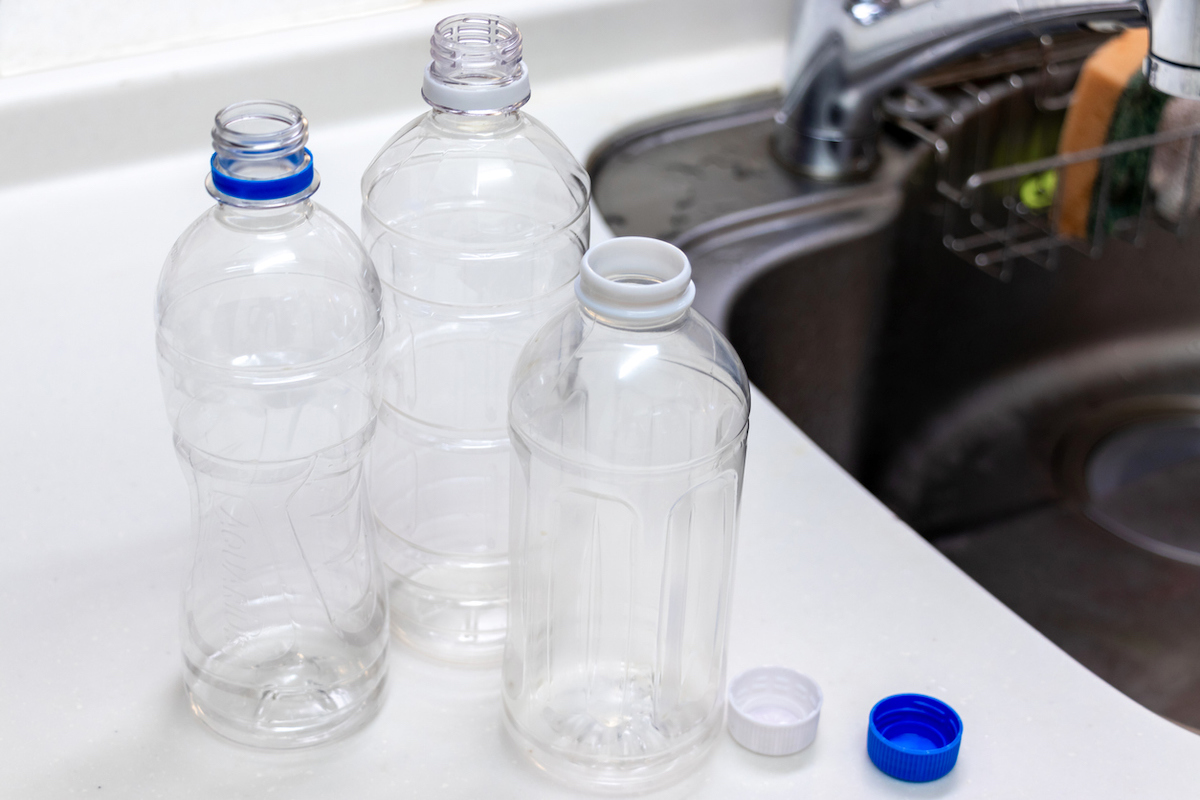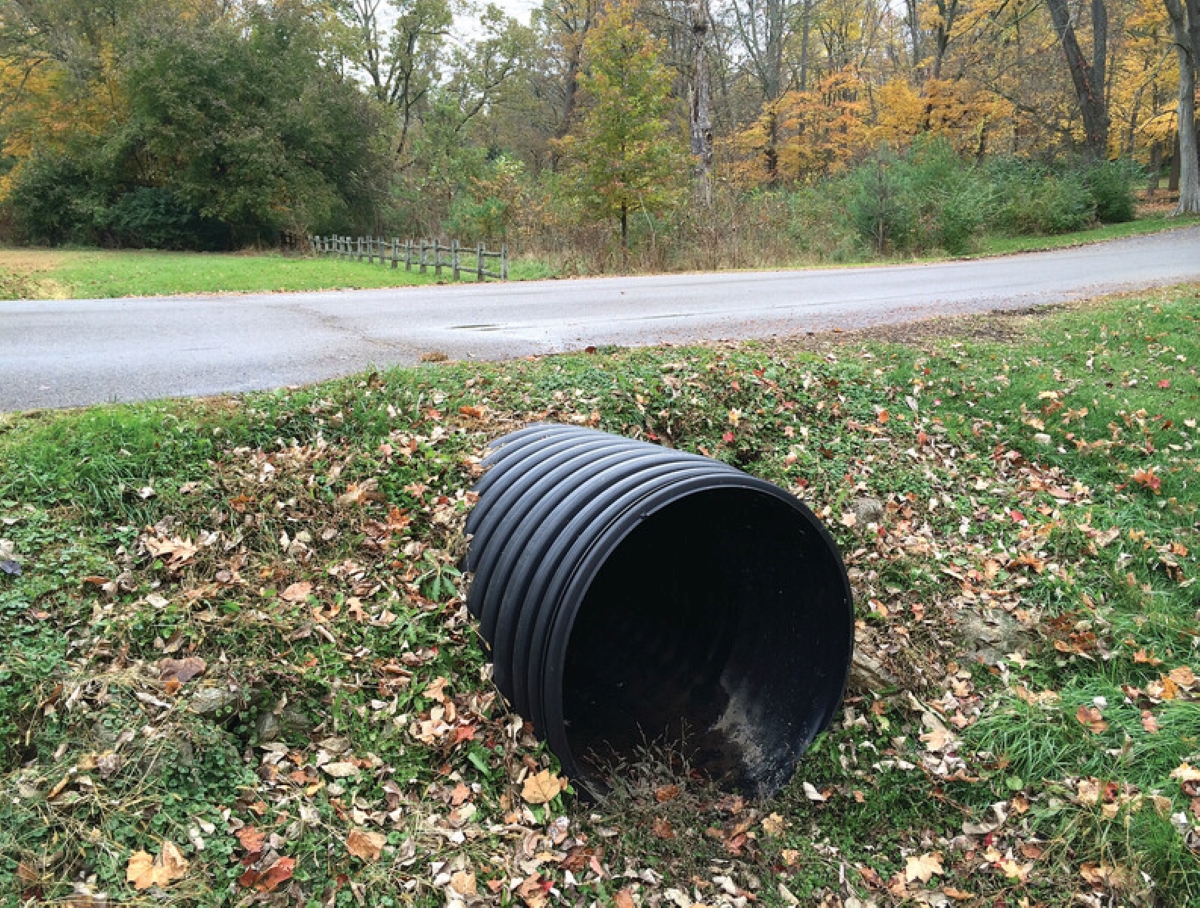

We may earn revenue from the products available on this page and participate in affiliate programs. Learn More ›
Home remodeling is a $400 billion industry, with about 1.123 million new single-family homes built in the United States last year, and experts say that both figures are on the rise. This growth requires billions of tons of concrete, steel, drywall, and other building materials, all of which require a tremendous amount of energy to extract, transport, and dispose of in landfills. According to the Environmental Protection Agency, construction has a major impact on the environment: It causes greenhouse gas emissions; air, water, and land pollution; energy and water consumption; and land and habitat loss.
When you’re updating your space, choosing sustainable home décor brands and recycled materials for renovation projects can reduce waste and environmental impact. The future of recycled plastic in construction, for example, is very promising. A recent report found that the global recycled plastic market is predicted to surpass $77 billion by 2030.
Whichever area of your home you’ll be redoing next, there’s a way to lessen the impact these improvements have on the environment (and when you’re done renovating, also try to recycle or donate unused or discarded materials to help close the product cycle loop). Ahead, discover some of the coolest home-improvement products on the market that are made from recycled materials.
1. Flooring

With so many eco-friendly options available, including those that use recycled materials, flooring is one of the easiest ways to green a home. One trend is to salvage wood from dilapidated barns and turn it into decorative flooring. While it’s a charming look and perfect for a modern farmhouse styled-home, you’ll want to make sure the old wood has been properly treated so that it won’t emit toxins into your home.
Another checks-all-the-boxes, eco-friendly flooring option is recycled cork: It’s sustainable, moisture-resistant, and absorbs sound. Companies like Jelinek Cork Group collect hundreds of thousands of used wine corks each year to develop versatile cork flooring, and they seal it with a polyurethane surface finish to make the cork more durable and easy to clean.
Home renovators who want a softer feel underfoot can opt for recycled carpet, which is relatively easy to find at local flooring and home-improvement retailers. Mohawk’s Everstrand line, for example, is made from up to 100 percent post-consumer recycled content. Recycled rubber flooring tiles, like FlooRX’s Precision Lock Rubber Floor, work really well for home gyms and playrooms.
RELATED: Is Cork Flooring Right for You?
2. Countertops

With a number of companies offering eye-catching countertops made from recycled materials, it is easier to go green in the kitchen and bathroom. Many of the products on the market are attractive, modern, and colorful—homeowners won’t be sacrificing style when they opt for sustainable countertops.
IceStone creates stunning countertops made from recycled glass, Portland cement, and nontoxic pigments. They also have a product called PaperStone, which is a heavy-duty, nonporous surface made from 100 percent post-consumer recycled paper coated with a petroleum-free resin.
Vetrazzo (see photo above) and Curava also offer unique-looking, dramatic countertops made from pre- and post-consumer recycled glass, including old traffic lights, jars, windshields from cars, and architectural glass.
3. Roof Shingles

Need to replace a leaky roof? A few innovative companies are manufacturing roof shingles made of recycled materials. Malarkey Roofing Products manufactures roof shingles by upcycling rubber and plastics. According to their statistics, each roof diverts the equivalent of about five tires and 3,200 plastic bags from landfills.
GAF, a Standard Industries company and the largest roofing and waterproofing manufacturer in North America, offers the industry’s first asphalt roofing shingles containing recycled material from post-consumer and post-manufacture waste shingles.
RELATED: 10 Innovative Materials Poised to Make Home Building More Sustainable
4. Deck

Wood decks are the standard in residential construction, but they do have their disadvantages. They require regular maintenance, and if they are not sealed they can weather and rot over time.
While there isn’t really an alternative to wood for the deck structure, a popular alternative for decking and railing is recycled plastic, and there are plenty of choices on the market. TimberTech claims to have kept 500 million pounds of waste and scrap out of landfills last year with their environmentally sustainable outdoor living products including decking. NewTechWood builds decks using 95 percent recycled materials including plastic bottles and reclaimed wood fibers.
Another composite decking brand, Trex, combines reclaimed wood with recycled plastic film and other recycled components ranging from dry cleaner bags, sandwich bags, newspaper sleeves, and shopping bags. Fun fact: the average 500-square foot composite Trex deck contains 140,000 recycled plastic bags.
Even though composite decking diverts plastic out of the waste stream, it has a few disadvantages to consider: Composite decking can get extremely hot in direct sunlight and be very uncomfortable on paws and bare feet. It also tends to cost more to install than wood decking.
5. Paint

One of the simplest ways to incorporate a recycled product into your home renovation is to choose the right paint. For years, companies like Sherwin-Williams have been producing water-based paint from recycled bottles and soybeans, safer chemical building blocks according to the Environmental Protection Agency.
Amazon Select Paints are eco-friendly latex paints. Made from recycled surplus paint that’s collected from government buildings, businesses, and consumers, it’s available in 20 hues. Recolor is another company that offers premium quality recycled paints collecting unused paint that is otherwise destined for the landfill.
RELATED: These 10 Eco-Friendly Design Trends Will Be Everywhere in 2022
6. Pavers

Show off sustainability to the neighbors by choosing recycled pavers for your driveway and pathways. Plasphalt is produced by substituting a portion of conventional aggregate in asphalt pavement with treated recycled plastic. The plastics are collected through the recycling process, treated, and then shredded into ground plastic material.
FILTERPAVE is a company that uses post-consumer recycled glass and stone aggregate to produce attractive porous pavers in a variety of colors. PAVERRECO takes used plastic, glass, and porcelain to manufacture pavers and tiles made from 100 percent recycled materials.
7. Bricks

There are a few ways that bricks can be made out of recycled materials, and the most prevalent is not at all a new concept: Clay bricks typically have a lifespan of 500 years, which means they can be reused for multiple building projects. They can also be crushed into dust and then remade into new bricks. There are also companies producing bricks out of recycled materials: ByBlock from ByFusion is made entirely from repurposed, recyclable plastic waste and can be used in lieu of concrete blocks.
8. Insulation

Adding sufficient insulation in the attic improves energy efficiency, and can help homeowners save up to 10 percent on annual energy bills. But you can make an even bigger impact by choosing types of insulation made from recycled materials, such as cork, newspaper, cellulose from recycled paper, wool, and even denim.
Consisting of 80 percent post-consumer recycled denim and recycled carpet fibers, the company that makes UltraTouch Denim Insulation collaborates with major clothing retailers to collect old jeans, and then transforms them into insulation. Fiberglass insulation manufacturers are getting eco-conscious, too: Knauf R-30 EcoBatt fiberglass insulation, for example, is made with at least 50 percent recycled glass content.
RELATED: 6 Things to Know About Sheep’s Wool Insulation
9. Walls

There are many opportunities to incorporate recycled materials when constructing and decorating your home’s framing and walls. For starters, using recycled steel or steel made from recycled content can make a huge difference in a home’s environmental footprint.
Steel is the most recycled material on the planet. Once produced, it can be continually recycled into new steel products. All steel currently produced in the United States contains recycled content—some steel products are 100 percent recycled. Those who want their homes to have an industrial vibe might consider finishing their walls with recycled products like cork, Ashcrete, and ByBlocks.
10. Drainage Pipes

Even hidden parts of a home can be more sustainable with some creative choices. Drainage pipes are the lifeline to any home, transferring fresh water throughout and removing wastewater. Several manufacturers are now offering drainage pipes produced from post-consumer recycled content like milk and juice bottles, detergent bottles, and shampoo containers. Two other companies to consider for eco-friendly pipes are Advanced Drainage Systems and Polypipe.
